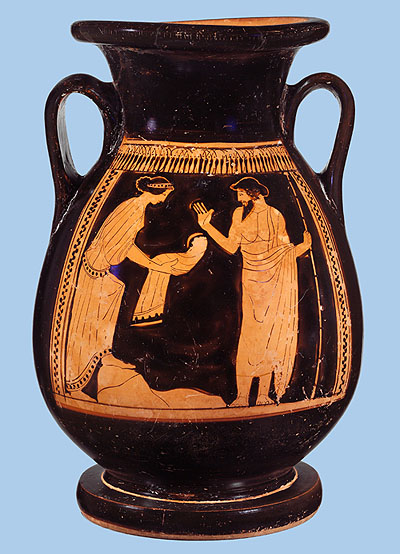The Kronia
Pottery vase, dating to about 460-450 B.C., now in the Metropolitan Museum
of Art, New York. The painting represents the goddess Rhea handing to
Cronus a stone enveloped in swaddling clothes, in substitution of the
infant Zeus. Rhea and Cronus, children of the Sky and the Earth, belonged
to the generation of the Titans, the primordial divinities who preceded
the Olympic gods. Cronus, having been advised of the danger to be dethroned
by one of his offspring, devoured all of his children. That is why Rhea
conceived the stratagem to save the last born child, Zeus.
In Athens, the year began with the first new moon after the summer solstice,
and the first month was called Hekatombaiòn, because of the sacrifices
(hecatombs) celebrated in honor of Athena. This month was dedicated to
Cronus, and the first festivity of the year was that of the Kronia. These
feasts comprised sacrifices and a banquet, during which masters and servants
exchanged their roles, as a commemoration of the primordial disorder of
the age of Cronus, to be replaced by the establishment of the social and
cosmic order by Zeus and Athena. To the latter goddess were, indeed, dedicated
the great festivities of the Panathenaia, which opened in the immediately
subsequent days. The feast of Cronus are defined by Fritz Graf as “a
carnival-like interregnum during which the order of Zeus was temporarily
suspended” (Graf, 1987, p.63).
[Source: http://library.artstor.org/library/]


